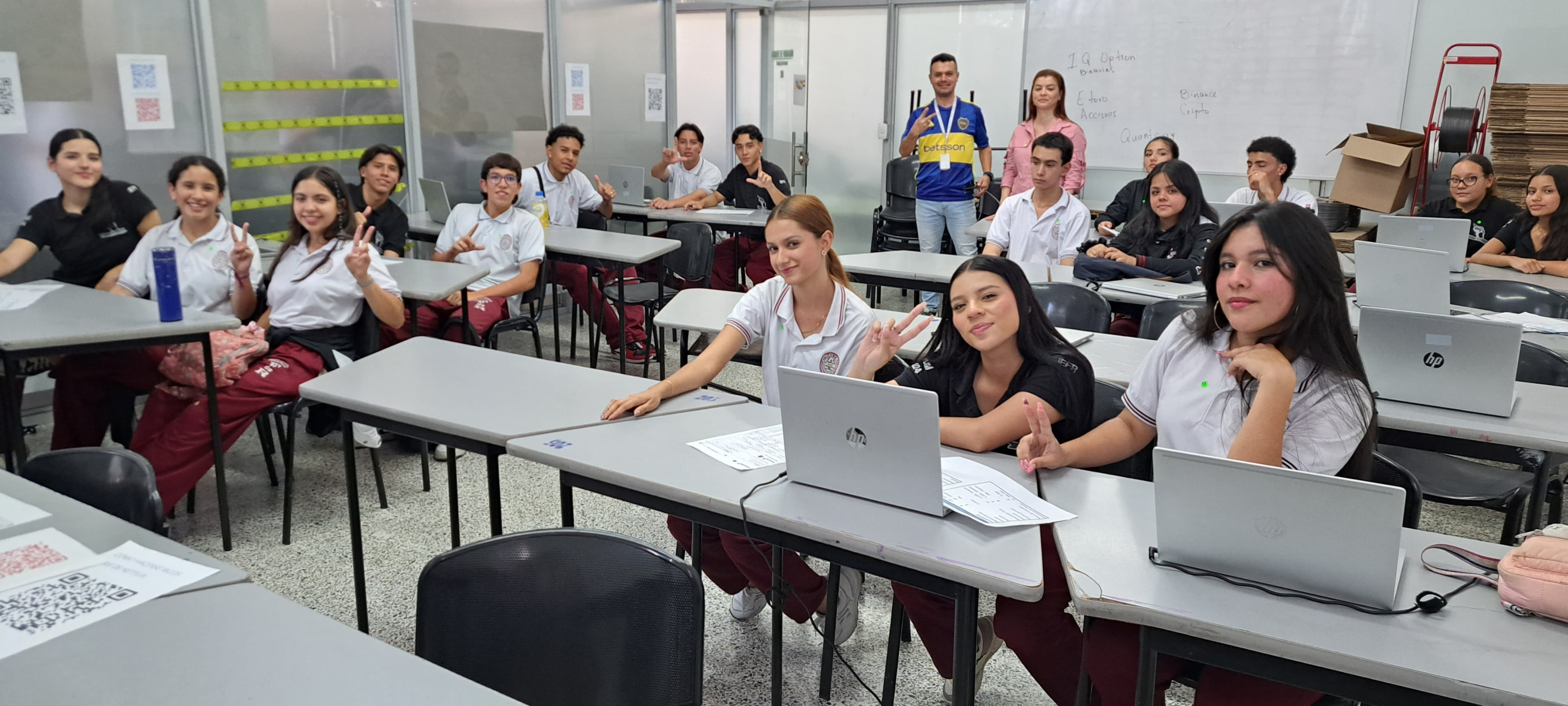'Icetex paisa': This is how the loans five universities are offering to students work.

Access to higher education in Colombia remains a challenge for many young people from low-income families . Amid the financial difficulties faced by Icetex , the state-run institution responsible for granting educational loans, five universities in Antioquia have taken the initiative to create an alternative to promote higher education.
EAFIT University, the Pontifical Bolivarian University (UPB), the School of Engineering of Antioquia (EIA), CES University, and the University of Medellín have launched the Future Fund, a strategy aimed at financing the education of low-income students.
The Future Fund Initiative The Future Fund aims to provide financing to young people beginning their university careers from low- and middle-income backgrounds.
This fund was created in a context in which Icetex has drastically reduced the number of loans granted in recent years, which has hindered access to higher education for thousands of young Colombians. According to recent figures, Icetex approved only 10,000 loans in 2024, a figure that represents an 82 percent drop compared to previous years.
The Future Fund will offer financing to 2,500 first-semester students starting May 7. Selected students will be able to access a loan with more favorable terms than those offered by Icetex. Under the program, students will only pay 30 percent of their tuition during their university studies. The remaining 70 percent will be financed by the fund interest-free for the first six months after graduation. Thereafter, a monthly interest rate of 1.5 percent will be applied to the financed amount, but will only be charged starting in the seventh month after completion of studies.

In the program, students will only pay 30 percent of the tuition fee. Photo: iStock
One of the most notable features of this initiative is the ability to finance 100 percent of tuition. To qualify for the loan, students must be enrolled in their first semester of college. The loan will accrue no interest for the first six months after graduation , a significant advantage over Icetex's traditional model. During this time, graduates will have a grace period to begin making payments , allowing them to focus on finding work without the immediate pressure of debt.
The loan will only apply to students in social classes 1, 2, and 3, who have historically benefited the most from state aid. This measure seeks to alleviate the financial burden on young people who lack access to scholarships or state funding programs . Unlike traditional loans, which have stricter conditions, the Fondo Futuro (Future Fund) aims to be a flexible and accessible option for those unable to access scholarships or places at public universities.

Students must have the institution's endorsement. Photo: SENA
Although the Future Fund will begin with an initial cohort of 2,500 students in the first half of 2025, the goal is for this model to expand in the coming years. If the program is successful, it is expected to benefit up to 250,000 young people across the country. This expansion will depend on the performance of the initial model and the reinvestment of the funds obtained through payments made by graduates.
The idea is for the fund to remain sustainable over time, with the participation of financial institutions, multilateral organizations, and private companies. This will ensure the program's continuity and promote access to quality higher education at some of Colombia's most renowned universities.

Students. Photo: Getty Images/iStockphoto
The Future Fund does not replace other types of aid available at participating universities, such as scholarships or financial aid programs. It is presented as an additional option for students who cannot access a scholarship but still wish to continue their studies in undergraduate programs. Selected students will be able to access the loan without interfering with other aid available at their respective universities.
This model has been designed to complement the scholarships and grants already available, meaning that those who already receive a scholarship will not lose the opportunity to participate in this fund. Furthermore, the loan is open to young people from all over the country, not just those residing in Antioquia. This expands the fund's reach and makes it an attractive option for students from different regions of the country.
Requirements and application to the Future Fund Access to the Future Fund is open to young people in their first semester of college who have not received scholarships or places at public universities. Students must meet certain socioeconomic requirements, especially those related to their socioeconomic status, as this fund is primarily aimed at those in strata 1, 2, and 3. Applications for the loan must be made through participating universities, which will be responsible for selecting eligible students.
This fund is presented as a direct response to the financial crisis that has affected traditional educational credit systems in Colombia, and seeks to open new opportunities for access to higher education for thousands of young people who would otherwise be unable to continue their university studies.
More newseltiempo


%3Aformat(jpg)%3Aquality(99)%3Awatermark(f.elconfidencial.com%2Ffile%2Fbae%2Feea%2Ffde%2Fbaeeeafde1b3229287b0c008f7602058.png%2C0%2C275%2C1)%2Ff.elconfidencial.com%2Foriginal%2F03a%2Fc1a%2F83e%2F03ac1a83e076bff03899fae9bdd55a5a.jpg&w=1280&q=100)


